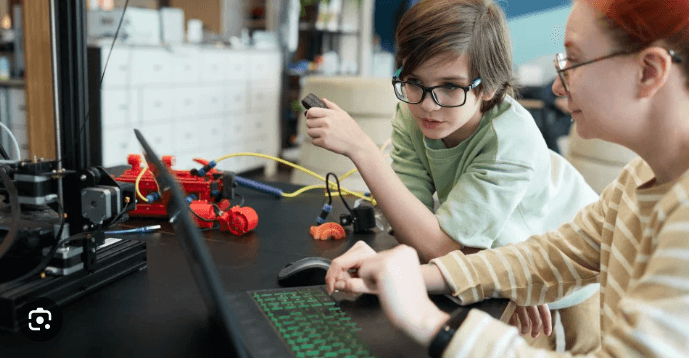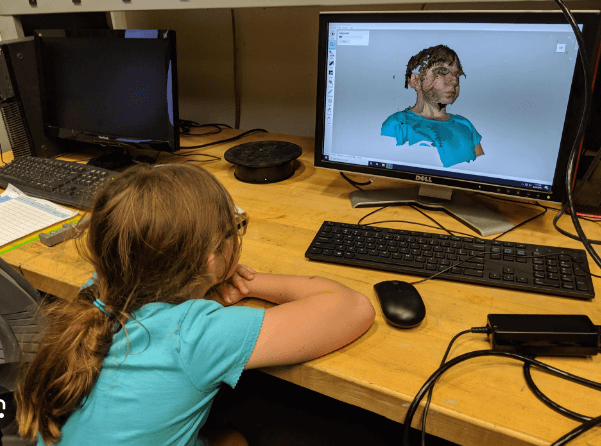Table of Contents
Education is constantly evolving, and one of the technologies at the forefront of this transformation is 3D scanning. The integration of 3D scanning technology in educational settings has the potential to revolutionize teaching and learning experiences for both teachers and students alike.
How can 3D scanning revolutionize teaching and learning?
Integrating 3D scanning technology in the classroom opens up a world of possibilities for educators. By creating accurate 3D models for science experiments, teachers can provide students with a hands-on approach to learning complex concepts.
Enhancing visual learning with 3D models allows students to explore artefacts in detail, bringing history and culture to life right in the classroom. Moreover, allowing students to experiment with 3D scanning can spark creativity and innovation, encouraging them to think outside the box.
What are the top 5 uses of 3D scanning in education?
One of the key uses of 3D scanning in education is for reverse engineering projects. Students can use 3D scanners to deconstruct and analyze existing objects, gaining valuable insights into design and manufacturing processes.
Additionally, utilizing 3D scanning for creating accurate 3D models for science experiments can significantly enhance students’ understanding of complex scientific principles. This hands-on approach to learning can make STEM subjects more engaging and accessible.
How can teachers benefit from using 3D scanners in the classroom?
Teachers can enhance their lesson plans by incorporating interactive 3D models that visually represent abstract concepts. This visual aid can help students grasp complex ideas more easily and retain information better.
By encouraging hands-on learning with physical 3D printed objects, teachers can create a dynamic classroom environment where students actively engage with the material. This approach can cater to diverse learning styles and improve overall student participation.
Moreover, engaging students through innovative educational tools like 3D scanning can make learning more exciting and relevant. By incorporating real-world applications of 3D technology, teachers can bridge the gap between theoretical knowledge and practical skills.
- Enhancing visual learning: 3D scanners can create realistic, three-dimensional models and objects that can help students better understand complex concepts in subjects such as biology, chemistry, and geometry.
2. Hands-on learning: Teachers can use 3D scanners to replicate real-world objects and artifacts for hands-on learning experiences. This can make learning more engaging and interactive for students.
3. Personalized learning: Teachers can use 3D scanners to create customized learning materials based on individual student needs and interests. This can help tailor the learning experience to meet the needs of each student.
4. Collaborative projects: 3D scanners can facilitate collaborative projects where students work together to create, design, and analyze three-dimensional models. This can help students develop teamwork and communication skills.
5. Real-world applications: Teachers can use 3D scanners to show students how technology is used in various industries, such as engineering, architecture, and healthcare. This can help students see the practical applications of what they are learning in the classroom.
6. Accessibility: 3D scanners can help make learning more accessible for students with disabilities by creating tactile models and materials that can be easily manipulated and understood.
7. Innovation and creativity: Using 3D scanners in the classroom can inspire students to think creatively and innovatively as they explore and manipulate three-dimensional objects and designs.
What are the challenges of implementing 3D scanning in educational institutions?
One of the main challenges is the cost implications of acquiring 3D scanning technology. Educational institutions need to invest in quality 3D scanners and related equipment, which can be a significant financial commitment.
Training educators to effectively use 3D scanners is another hurdle that schools may face. Teachers need to understand the technology and its applications to fully leverage its potential for enhancing the learning experience.
Furthermore, integrating 3D scanning into existing curriculum can be a complex process that requires careful planning and coordination across different subject areas. Ensuring that 3D scanning aligns with learning objectives and educational standards is essential for successful implementation.
- Cost: 3D scanning equipment can be expensive to purchase and maintain, which is a barrier for many educational institutions with limited budgets.
2. Training: Educators and students may require training to learn how to use 3D scanning technology effectively, which can be time-consuming and costly.
3. Accessibility: Not all students may have easy access to 3D scanning technology, which can create disparities in learning opportunities.
4. Integration: Incorporating 3D scanning into existing curricula and teaching practices can be challenging and may require significant restructuring.
5. Technical limitations: 3D scanning technology may have limitations in terms of accuracy, resolution, and capabilities, which can affect its effectiveness in educational settings.
6. Data management: Managing and storing the large amount of data generated by 3D scanning can be a challenge for educational institutions, especially if they do not have robust IT infrastructure in place.
7. Ethical considerations: There may be ethical concerns surrounding the use of 3D scanning technology, such as privacy issues and potential misuse of scanned data.
8. Maintenance and support: Like any technology, 3D scanning equipment may require regular maintenance and technical support, which can be a burden for already overstretched educational institutions.
Also Read About: The Benefits of Classroom Decorating That Every Teacher Should Know About
How can schools leverage 3D scanning for interdisciplinary projects?
Collaborative projects that combine art and technology can demonstrate the interdisciplinary nature of 3D scanning. By exploring historical artefacts through 3D scanning, students can gain a deeper understanding of the past while honing their technological skills.
Promoting STEAM education through hands-on 3D modeling projects can encourage creativity and innovation among students. By integrating 3D scanning into interdisciplinary projects, schools can inspire a multifaceted approach to learning that prepares students for the challenges of the modern world.
Schools can leverage 3D scanning for interdisciplinary projects by incorporating technology into various subjects such as art, science, history, and engineering.
For example, in art class, students can use 3D scanning to create digital sculptures or models of their artwork. In science class, students can use the technology to analyze and compare objects in the natural world, such as plant cells or animal skeletons.
In history class, students can use 3D scanning to create virtual tours of historical sites or artifacts, providing a more immersive learning experience. In engineering class, students can use 3D scanning to design and prototype objects or structures, testing their ideas in a more hands-on way.
By integrating 3D scanning into various subjects, schools can provide students with a more engaging and interactive learning experience, allowing them to explore concepts more tangibly and practically. This can also help students develop critical thinking and problem-solving skills, as they work on projects that require them to collaborate and think creatively across different disciplines.





![1000 Girl Attitude Names for Truecaller ID | UPDATED [Included Boys Names] 1000 Attitude Names for Girls on Truecaller](https://edutechbuddy.com/wp-content/uploads/2025/05/ChatGPT-Image-May-21-2025-11_59_39-PM-1-150x150.png)






